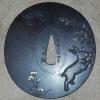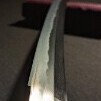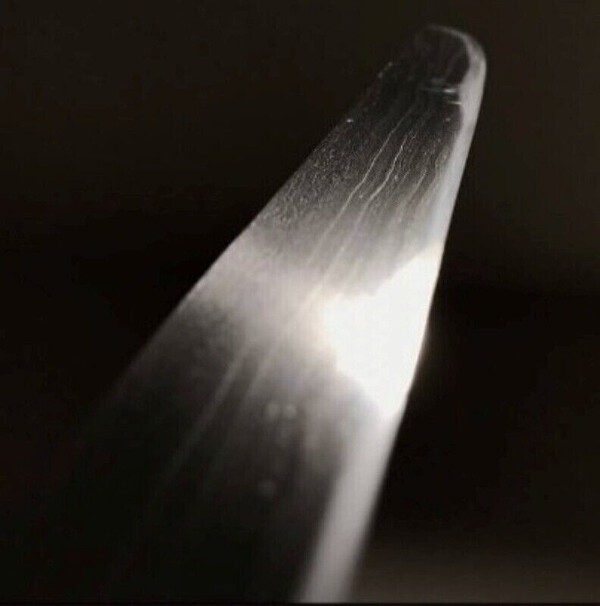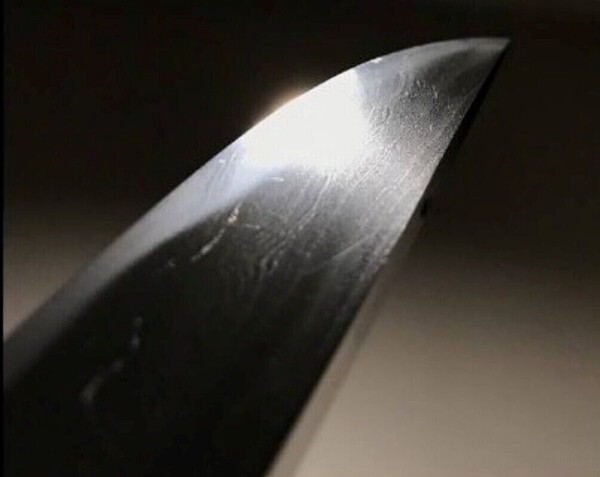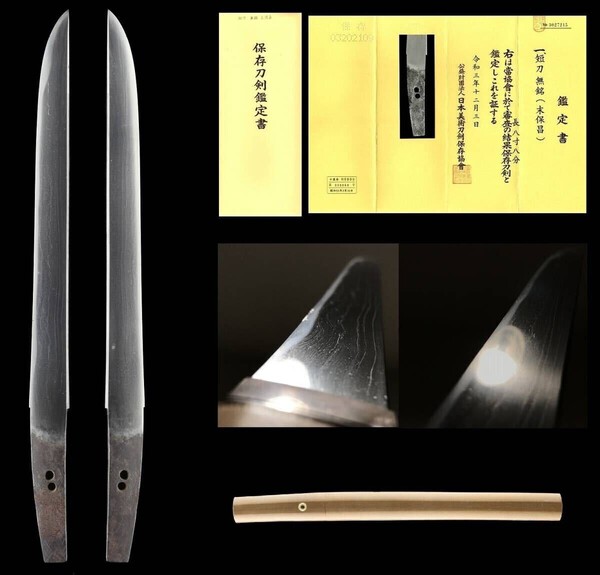-
Posts
95 -
Joined
-
Last visited
-
Days Won
1
jt nesbitt last won the day on September 15 2021
jt nesbitt had the most liked content!
Profile Information
-
Location:
New Orleans
Profile Fields
-
Name
jt nesbitt
Recent Profile Visitors
jt nesbitt's Achievements
-

The E-bay snag of a lifetime?
jt nesbitt replied to Jonas Ne's topic in Auctions and Online Sales or Sellers
Jussi is absolutely right. If you are like me, the only way to learn is a combination approach. I can't make a real connection unless I have the THING in my hands and can look at it. Photos and dry texts only take me so far, I have to "feel" it. Read books, AND buy inexpensive stuff. The ebay seller - "hitendo" deals in inexpensive, but honest blades, and is a nice man. It's where I bought my first blade - and I still love that inexpensive but GREAT wakizashi. I would never sell it! Look him up. -- JT -
So...Three and a half years later... I finally found something similar online. I sure would appreciate a full translation of this certificate 'cause I haven't had a good nights sleep since I bought this damn thing! Thanks in advance for your opinions and expert analysis! -- JT
-

What is the best Nihonto Blade you've ever seen in hand
jt nesbitt replied to Tom Darling's topic in Nihonto
Q - "What is the best nihonto blade you've ever seen in hand?" A - The next one. -
Hey Nathan- It's a Great buy because it has led you down a rabbit hole that you wouldn't have otherwise travelled. A great teaching tool, and a beautiful sword as well. I wouldn't worry about chasing down NBTHK, just enjoy it! I have a few of these type of inexpensive and questionable blades that I really love, and I have come up with a formula that has worked out great as a guide for buying them...GET READY FOR THE SECRET TO HAPPINESS with authentic-but-inexpensive Nihonto collecting - THE $300.00 RULE! Nice hada - $300 Nice overall sugata - $300 Nice hamon - $300 Nice habaki - $300 Nice shirasaya - $300 Nice mei - $300 Nice polish - $300 Some kind of papers - $300 Since your sword check All of these boxes - you saved $900!!! A SAGE and SALUBRIOUS purchase! If you want to sell it, I would be happy to give you the $1,500 that you have invested, just DM me! -- JT
-

This is Fake right? signed but
jt nesbitt replied to Johnbull's topic in General Nihonto Related Discussion
Woof. Run Away. Just curious - how does the seller describe this? Would be a great case study for the section on fake nihonto that Brian is assembling here - -

Tips for finding inexpensive nihonto?
jt nesbitt replied to axeman1984's topic in General Nihonto Related Discussion
Justin- Grev is Spot-On. When I first started collecting I bought from Hintendo and had a great experience. He specialized in "nice but not historically significant" type stuff. Subsequently, I tried various other vendors on Ebay and have been let down about half the time. Always had good communication and good product from Hintendo. Your next stop is Amazon to buy this- "The Connoisseur's Book of Japanese Swords" by Kokan Nagayama. Also "Encyclopedia of Japanese Swords" by Markus Sesko Will really help you with deciphering the "code language" that you are going to find here on the NMB. Welcome to the Rabbit Hole. -- JT -

Proper Etiquette and Horimono
jt nesbitt replied to jt nesbitt's topic in General Nihonto Related Discussion
For group consideration on the topic - Here is a Gassan blade made in 1867 with a horimono engraved in 1967... A Shinshinto katana with ato-bori horimono done in "modern" times. I think that it looks amazing. -- JT https://www.aoijapan...iou-3-nen-8-gatsuhi/ -

Wakizashi in koshirae - discussion, and check my notes
jt nesbitt replied to GeorgeLuucas's topic in Nihonto
Sam- As the most amateur member on this board, and the guy who is always buying old worn out junk then pestering the good people here to waste their time analyzing it for me - please take everything that I am about to post with Extreme Reservation! I love this sword. The second smaller groove that you are seeing below the main bohi is called a soe-bi. Technically the groove pattern that you have is a koshi-bi with soe-bi. You are right to notice that a faint soe-bi is a great indication of polishing. Like the tread of a tire. Yours doesn't look that that bad, compared to others out there, so that tells me that there is thick enough kawagane surface steel (health) left in this blade for a professional polish to be conducted. There are some deep pits in the kissaki and mune that are going to remain, but I suspect that they may be able to be disguised by a good polisher as "ware" - forging flaws and openings that are typically not a deal killer on koto swords. Generally speaking, old swords get a pass when it comes to imperfections like this. Which brings me to the next topic, age. I think that this is a legit OLD sword. My best guess is that this is a seriously chopped katana. Probably a late Muromachi period (1580's) katana. Swords were shortened ALL the time in the old days prior to about the 1620's. In the late Muromachi period, they were making swords that resembled massive Nanbokucho blades, and the general consensus is that what the smiths in the late Muromachi were going for is something that looked liked shortened Nanbokucho stuff - so that you could buy new and not have to cut up an oldie, but still use it in the same way. I have one of those Muromachi blades in my collection (Echizen Kanenori) has a nagasa of 30", so if it had a serious o-surigae down to wakizashi size, you might not see the original mekugi-ana at all, just like what I THINK is shown here. There is a boshi on this one but it looks to my eye like the the kissaki has been re-shaped as it looks a little thinner than the hamon. That would be consistent with chu-kissaki seen on these late Muromachi, Nanboucho-style katana. For some reason, this sword kinda reminds me of my Kanenori with it's elegant sori, nicely done itame hada (not too big, not too fine, just right), and very tastefully executed bohi. I am a firm believer that ALL of these old things have value. If they are well crafted, that means that somebody dedicated a lifetime of learning to make it, and that passion has value to me. Having nihonto experts express admiration, and subsequent papers is a very important component to learning this subject matter, but you have a GREAT learning tool in your hand right now. I hope that you use it. - - - -Books that you should buy right now (heck I had to use these just to be sure my spelling was correct a few times in this dumb post!): - - - "The Connoissur's Book Of Japanese Swords" by Kokan Nagayama "Encyclopedia Of Japanese Swords" by Markus Sesko Congratulations on a great find! Considering the price that you paid - I would definitely send this out for polish....Ya got nothing to loose. -- JT -

Proper Etiquette and Horimono
jt nesbitt replied to jt nesbitt's topic in General Nihonto Related Discussion
Piers- Wow! straight to the source! I am still in the early stages of planning this trip so nothing is set in stone, no steel has been bought. Is "Tumi" of the Osafune Museum some kind of business manager? Is there contact info for a specific facilitator that I could have access to? How do I actually get into this network? Thank You!! --- JT -

Proper Etiquette and Horimono
jt nesbitt replied to jt nesbitt's topic in General Nihonto Related Discussion
All good points and thanks for the participation. I sure would like to find someone on the NMB who has actually commissioned work and could describe the experience, along with some actual contacts within the traditional Japanese craft community. -- JT -

Proper Etiquette and Horimono
jt nesbitt replied to jt nesbitt's topic in General Nihonto Related Discussion
Piers- Thanks for the reply. Looks like you have had interaction with the kind of people that I should reach out to. Do you have any contact info for any of these craftsmen? There must be some sort of business manager who facilitates commissions, and handles sales inquiries right? Thank you. -- JT -

Proper Etiquette and Horimono
jt nesbitt replied to jt nesbitt's topic in General Nihonto Related Discussion
Mark- Perhaps I have misused the term Ato-bori. What I was driving at is that all horimono are applied after forging and polishing, by a specialist. The Marcus Sessko encyclopedia defines the term as "carvings on a sword blade added later". He doesn't specify how much later... Anyway - my question is do you have any experience with traditional Japanese engravers? Can you point me in the right direction? And have you ever enquired about having an old blade engraved, if so, did you get any push-back on the topic? -- JT -

Proper Etiquette and Horimono
jt nesbitt replied to jt nesbitt's topic in General Nihonto Related Discussion
Hey John- Since all horimono (ancient and modern) are done ato-bori, I am going to assume that a large part of the craft is determining how to cut, and where to cut it. Involving the craftsman in initial blade selection would be a good idea I suppose, but I don't have any solid info. Hoping someone here has good intel on this subject. -- JT -

Proper Etiquette and Horimono
jt nesbitt replied to jt nesbitt's topic in General Nihonto Related Discussion
Geraint- I have thought about that a lot. And it might be the route that I take, but the question about the cultural acceptance of applying new horimono to old blades remains. Is it acceptable? -- JT -

Article on Nihonto fakes needed
jt nesbitt replied to Brian's topic in General Nihonto Related Discussion
As the resident garbage collector - I have a great DEEP fake! What has a hada pattern, a shirasaya, a (faint) hamon, was advertised as Edo period on eBay, located in Japan, and has Japanese paperwork -----But is not Nihonto? Hantanrento! Early on in my journey, I got suckered by this one but I didn't pay much for it and it's a great educational tool. I still think that it is a cool thing to have around anyway! -- JT


